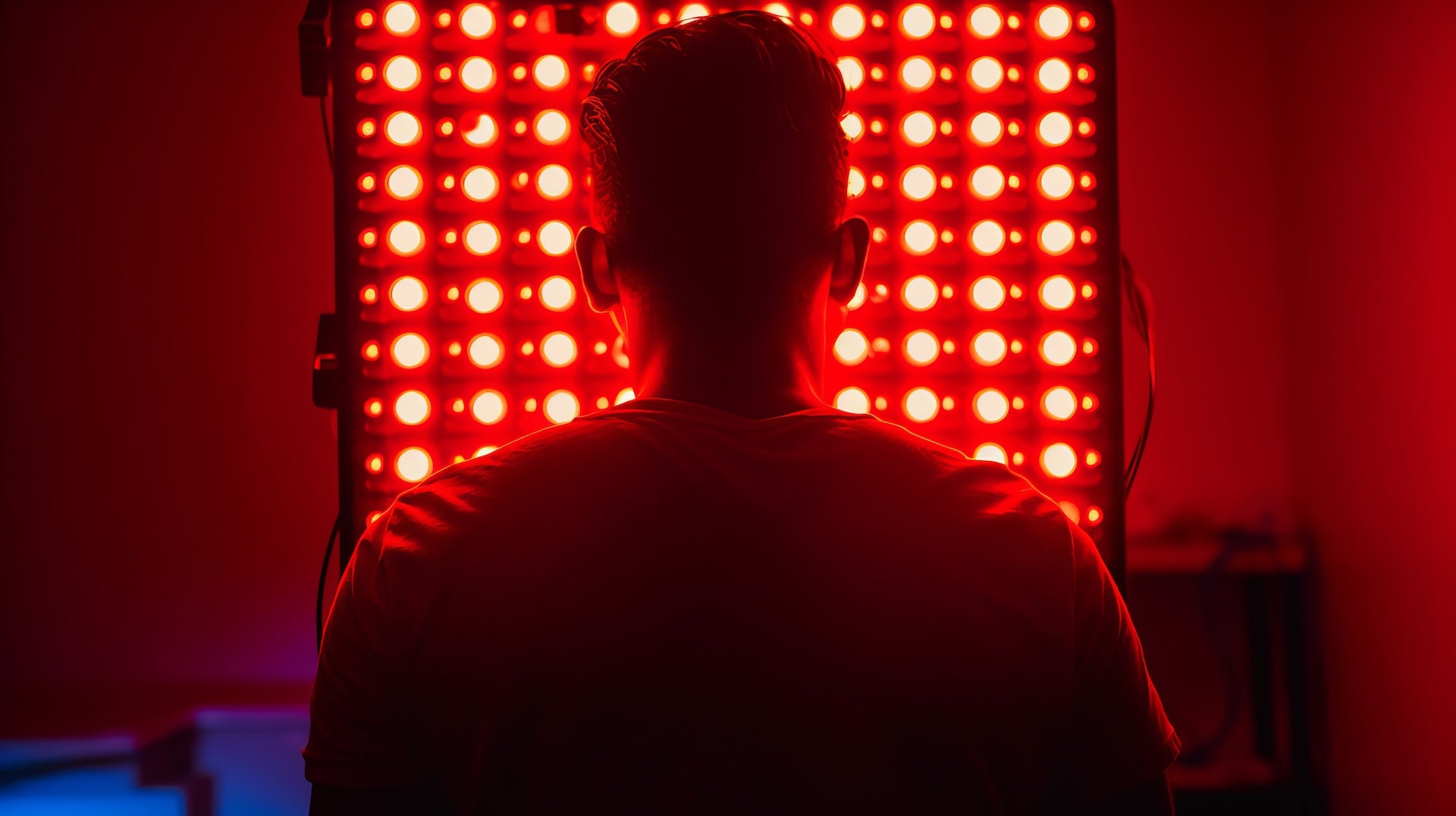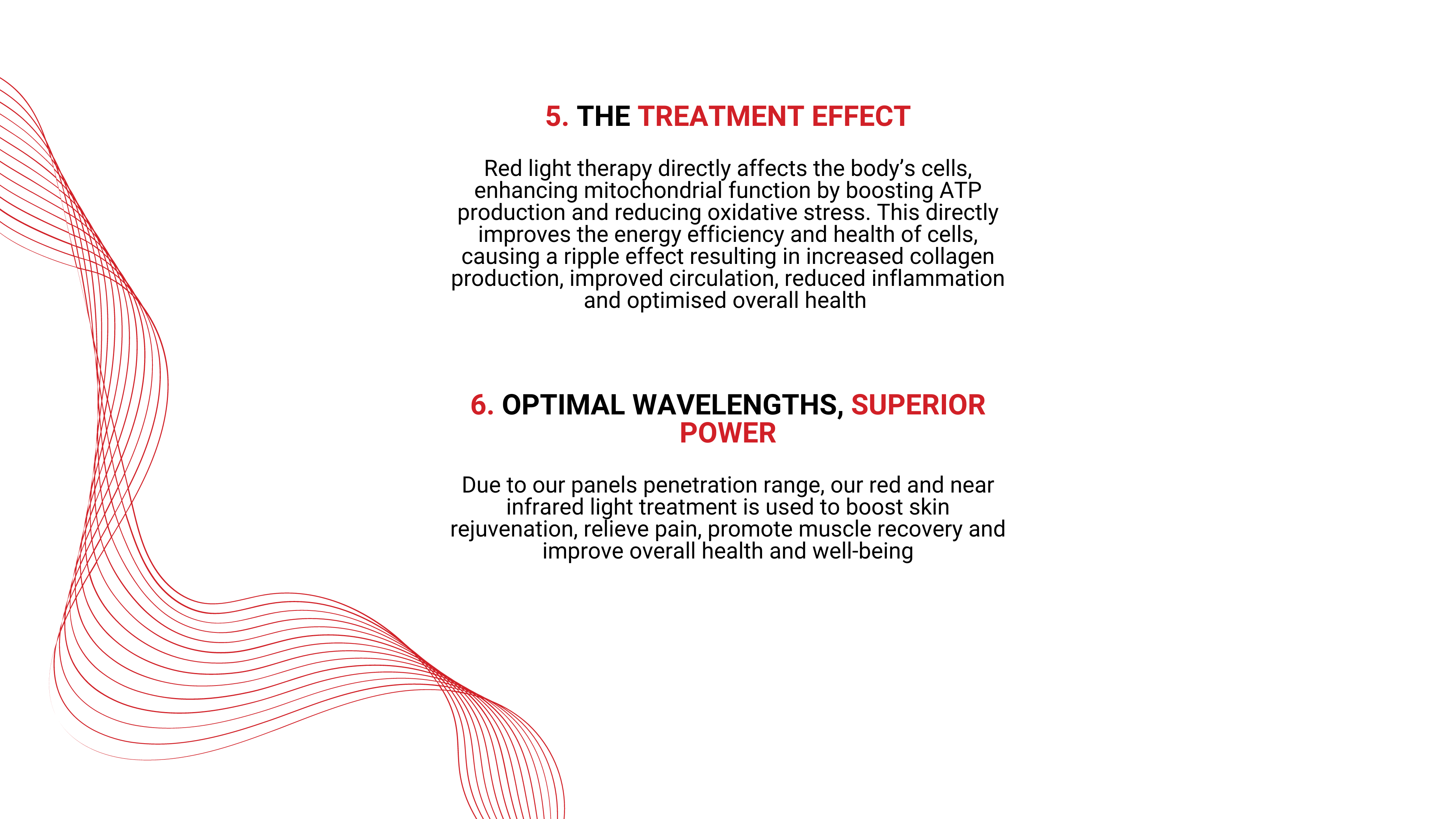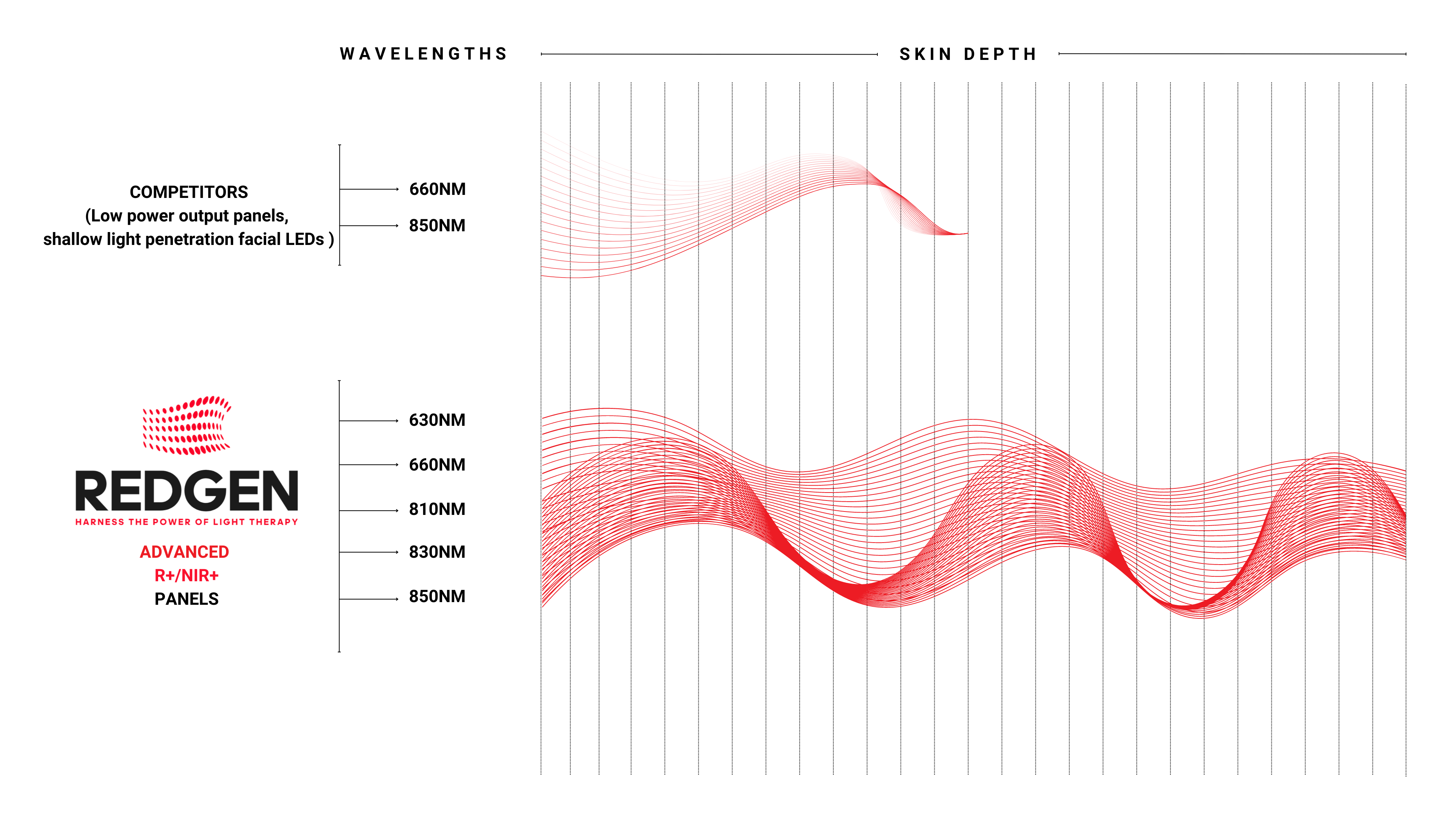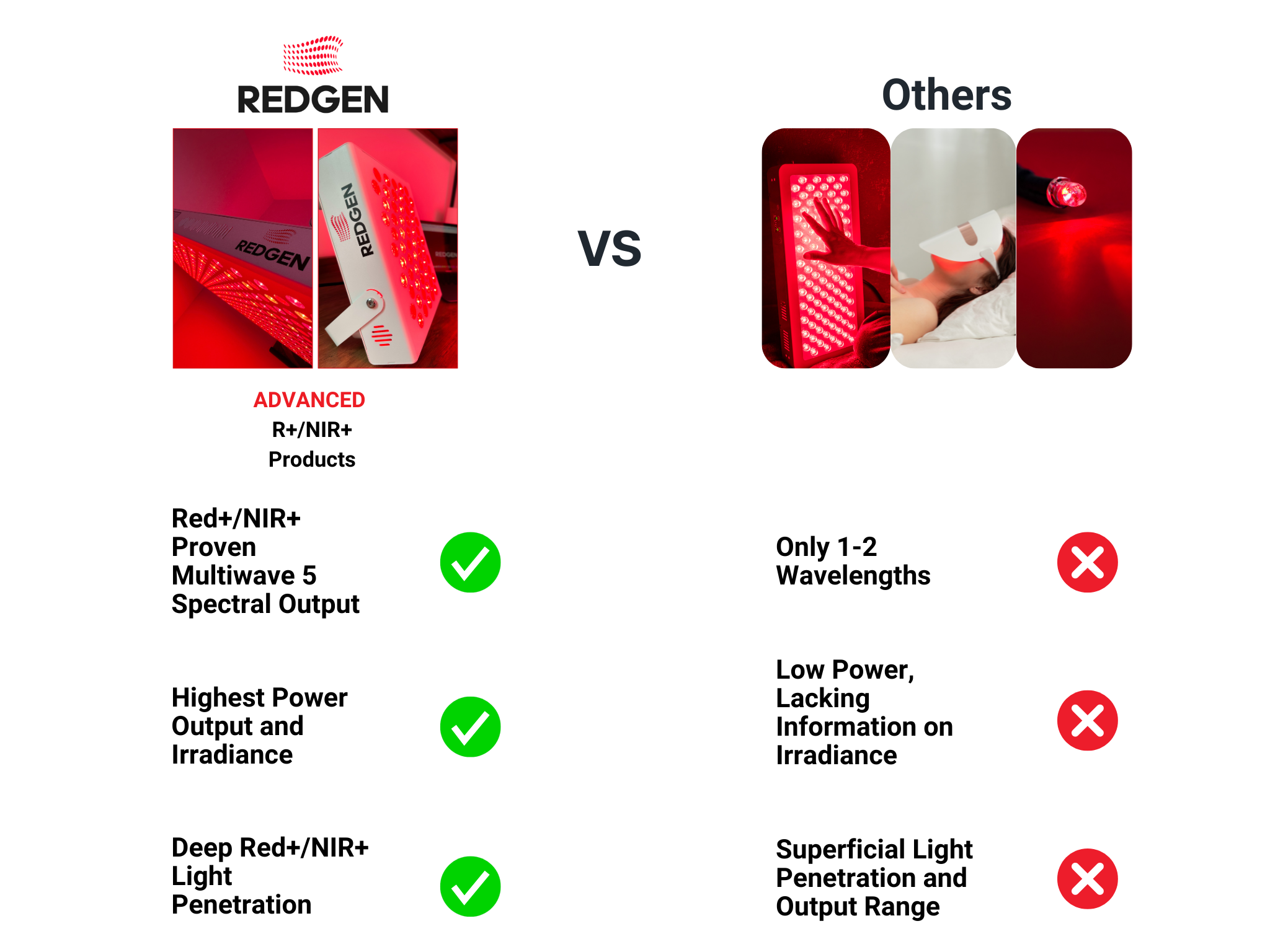
Red Light Therapy has also been researched in over 4000 laboratory studies. Here at RedGen we customise your treatment to achieve optimal results. We do this by using a mix of Red and Near-Infrared Light wavelengths that are backed by peer reviewed clinical studies.
Here's a breakdown of the process of how RedGen's Red Light Therapy works to help you recover and rejuvenate faster




Collapsible content
STIMULATES COLLAGEN PRODUCTION
Collagen is a protein that provides structure and elasticity to the skin. As we age, collagen production decreases, leading to wrinkles, fine lines, and sagging skin. Red light therapy stimulates fibroblast activity, increasing the production of collagen and elastin, which helps improve skin firmness and reduces the appearance of fine lines and wrinkles, resulting in a more youthful appearance.
Clinical Studies
Utilization of light-emitting diodes for skin therapy: Systematic review and meta-analysis
Does photobiomodulation influence ageing?
Reverse skin aging signs by red light photobiomodulation
Unlocking the Power of Light on the Skin: A Comprehensive Review on Photobiomodulation
IMPROVES SKIN TONE AND TEXTURE
By promoting cellular regeneration and turnover, red light therapy can improve skin tone and texture. It helps minimize the appearance of pores, evens out skin tone, reduces pigmentation irregularities, and smooths rough patches, resulting in a more youthful and radiant complexion.
REDUCES SUN DAMAGE
Exposure to UV radiation from the sun or artificial sources, such as sunbeds, can accelerate premature ageing of the skin, a process known as photo-ageing. This accounts for approximately 90% of visible changes in the skin.
UV radiation damages the skin’s DNA, as well as collagen and elastin fibers, leading to wrinkles, age spots, loose skin, pigmentation, and other signs of photodamage.
Red light therapy helps repair sun-damaged skin by stimulating cellular repair and turnover mechanisms, while boosting collagen and elastin production. This reduces the appearance of wrinkles and fine lines and improves skin elasticity, tone, and texture.
NON-INVASIVE AND SAFE
Unlike more aggressive anti-ageing treatments such as chemical peels or laser resurfacing, red light therapy is non-invasive and
gentle on the skin. It doesn't cause damage or downtime, making it a safe and convenient option for individuals seeking anti-ageing benefits.
ACCELERATES RECOVERY
Red light therapy energises the mitochondria, the powerhouse of cells, to produce more adenosine triphosphate (ATP). ATP is the primary source of energy for cellular processes, including muscle contraction and repair. By increasing ATP production, RLT can enhance the muscle's ability to recover and regenerate faster.
Red light therapy also promotes vasodilation, which increases blood flow to the muscles. This increased circulation delivers more oxygen and nutrients to the muscle tissue, aiding in the removal of metabolic waste products that accumulate during exercise, resulting in reduced muscle soreness and stiffness.
Clinical Studies
Photobiomodulation in human muscle tissue: an advantage in sports performance?
REDUCES PAIN AND INFLAMMATION
One of the primary benefits of red light therapy is its anti-inflammatory effects. Inflammation is a key component of joint pain and arthritis. RLT helps to
reduce inflammation by modulating the activity of inflammatory mediators and promoting the release of anti-inflammatory cytokines. This can lead to a decrease in pain and swelling associated with joint pain and arthritis.
IMPROVES WOUND HEALING
Red light therapy stimulates fibroblast activity, which are cells responsible for producing collagen, the main structural protein in connective tissue. Collagen is essential for wound healing as it provides strength and structure to the skin. RLT also promotes the migration of fibroblasts to the site of the wound, accelerating the formation of new tissue.
RLT also accelerates vasodilation, which increases blood flow to the wound site.
Improved blood circulation delivers oxygen and nutrients essential for the healing process while removing metabolic waste products and toxins. Enhanced blood flow also helps regulate inflammation and promotes the recruitment of
immune cells necessary for tissue repair.
ENHANCES MOOD AND SLEEP
Research suggests that red light therapy may increase serotonin levels in the brain.
Serotonin is a neurotransmitter associated with mood regulation, feelings of
well-being, and relaxation. By boosting serotonin production, RLT may help
alleviate symptoms of depression, anxiety, and stress, promoting a more
positive mood and emotional balance. It has also been shown to decrease levels
of cortisol, the body's primary stress hormone, helping alleviate symptoms of
anxiety and tension, facilitating a greater emotional well-being.
With regards to sleep, exposure to red light therapy, particularly in the evening or
morning, can help regulate circadian rhythms. Our body's internal clock,
governed by light exposure, helps regulate sleep-wake cycles, hormone
secretion, and other physiological processes. Red light therapy can help
synchronise circadian rhythms by mimicking natural sunlight cues, promoting a
more consistent sleep-wake cycle. Red light therapy can also help enhance
melatonin production, leading to improved sleep quality and duration.
INCREASED ENERGY
Red light therapy provides the body with more energy by
stimulating the mitochondria, which are like cellular power plants responsible
for generating energy in the form of adenosine triphosphate (ATP). When exposed
to red or near-infrared light during therapy, mitochondria become more active
and efficient in producing ATP. This increase in ATP production provides cells
with the energy they need to perform various functions, such as repairing
damaged tissues, reducing inflammation, and promoting overall cellular health.
As a result, red light therapy can leave individuals feeling more energised and
may also help alleviate fatigue.

Other brands use lower power LEDs with different distribution and spectral output; often leading to inconsistent results. RedGen's technology utilises multi-wavelength LEDs that deliver a smooth, uniform and even distribution of red and near infrared light. This when combined with other proven wavelengths provides a more effective treatment and desired outcome.



